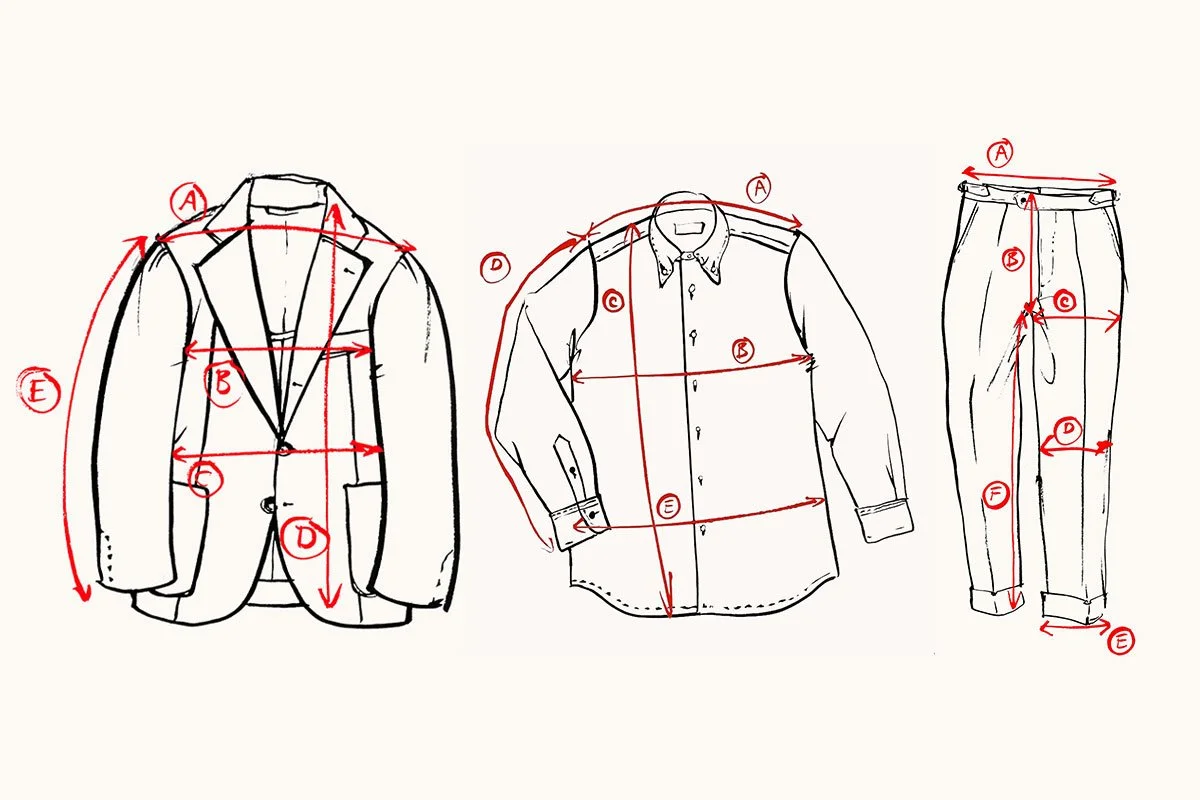The Ultimate Sizing Guide to Buying Clothing Online - How to Measure Yourself and Find the Perfect Fit
I’m frequently asked about sizing by people who want to order something online but are not sure which size to get. So it finally clicked for me that I should create a guide on how to buy clothes online, because there is no such thing as universal sizing. I have tops with sizes on the label ranging from S to XL, and even though the sizes are so different, they all have very similar measurements and fit. This just shows that the only thing that really matters are the measurements of the garment, which should always be available in the measurement chart on the product page (and if not, just email or message the brand or shop to make sure). But even that can’t really help you unless you know your own measurements and understand the differences between different pieces of clothing - why your T-shirt is smaller in size than your jacket, even though that seems totally logical.
Let’s start with our body measurements first. The most important are chest, shoulders, and waist measurements, but if you have a more athletic physique, even the biceps can be problematic. Length is not as important when it comes to casual clothing, because if something is too long you can roll the sleeves or tuck it in. Length is more important for tailoring, where you want everything to fit as perfectly as possible, and if a ready-to-wear shirt or jacket is too long, you should get it tailored. Below is an example of how to measure your own body. When you know your own measurements, let’s move to measuring the garments. Here you have to learn how to measure chest (pit to pit), shoulders, back length, and sleeve length for shirts, jackets, and outerwear, and waist, inseam, thigh, leg opening, and rise for bottoms. Examples below.
Body measurements explained by Husbands Paris
The next step I suggest is to measure the garments that fit you best and write down and save their measurements (garments should always be measured while laid flat). This allows you to check the measurements chart and compare it with your own clothing whenever you’re looking at a new piece, so you know which size to choose.
At this point, you will probably realize that the measurements of your favorite T-shirt are smaller than those of your favorite shirt, because a T-shirt has a different cut, lighter, more forgiving fabric, and is worn closer to the body. The same goes for shirt vs. sportcoat. A shirt is made of lighter fabric and worn closer to your skin compared to a sportcoat, which is made from thicker fabric and should also have some room for movement or layering, so the measurements are bigger. The same goes for a sportcoat vs. outerwear. Outerwear is usually made from thicker fabric, but even if not, it is meant to be worn over a sportcoat, so the measurements should be slightly larger compared to a sportcoat. To sum it up, you can pick measurements closer to your body measurements in lighter fabrics, but keep some room for layering in thicker fabrics.
Garment measurements guide by Natalino. Jacket: A - Shoulders, B - Chest, C - Waist, D - Length, E - Sleeve Length. Trousers: A -Waist, B - Rise, C - Thigh, D - knee, E - Leg Opening, F - Inseam
To give you an example with measurements of my garments: my actual chest size is 106 cm (half is 53 cm), so the chest of my T-shirt measures 53–55 cm, as I prefer them to fit more slim. The chest of my shirts usually measures 55–56 cm for a tailored fit and 57–58 cm for more casual shirts. My tailored jackets are also between 54–56 cm, depending on the fabric, but my overshirts and casual jackets are mostly 58–60 cm in chest measurements. Outerwear is in a similar range, if not a couple of centimeters more, so I can fit a sportcoat or a thicker sweater underneath. From these measurements, you can probably tell that the thicker the layer (or the heavier the fabric), the larger the chest measurements are, and the same applies to the measurements of the shoulders.
From now on, you should keep that in mind every time you are shopping. Even if you are buying different pieces from the same brand, you should always check the measurements chart to make sure you select the right size. Even the same model from the same brand can have slightly different measurements depending on the fabric or if there were any changes in production, etc. This is the best way to make sure you get the right size, but keep in mind that even then, for handcrafted products, the size chart may differ slightly (±1 cm).
related articles







Bennett Winch makes high-quality bags in England, using the best materials and classic designs. From canvas totes to suit carriers, their bags are built to last, get better with age, and are made to be used every day.